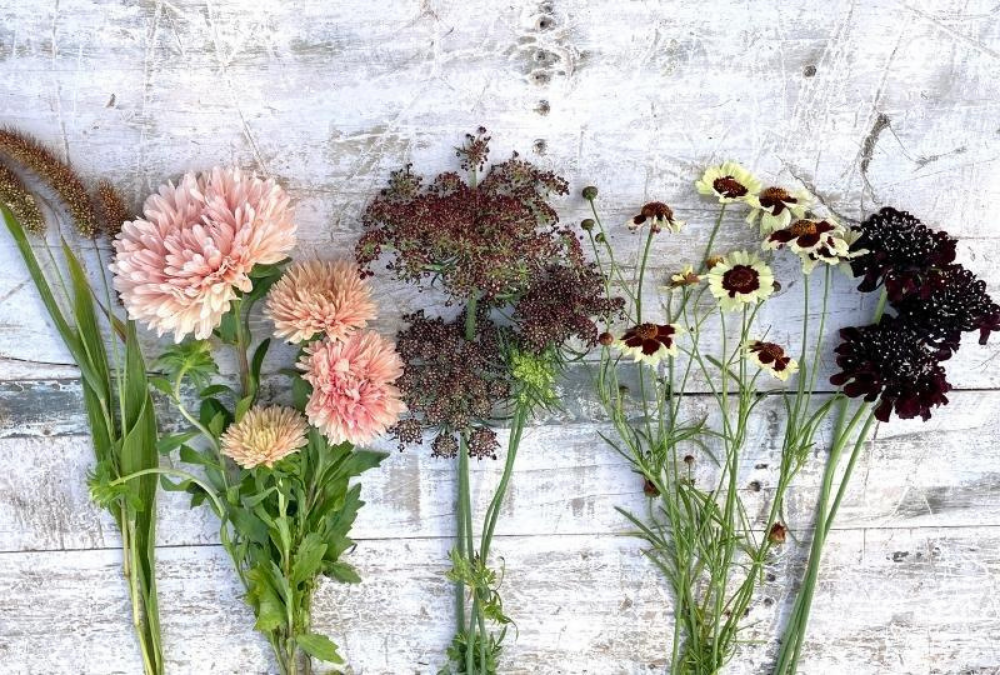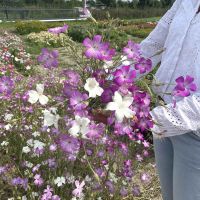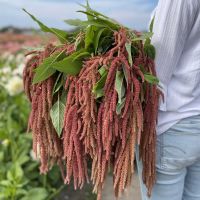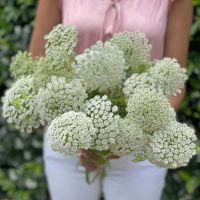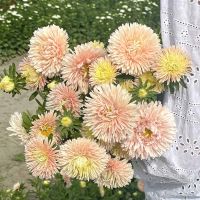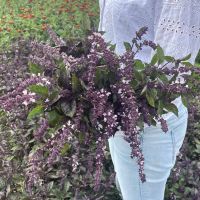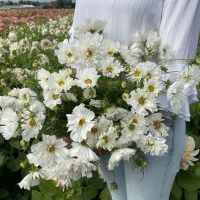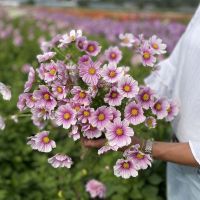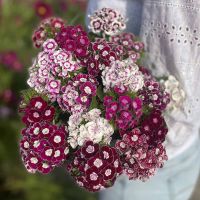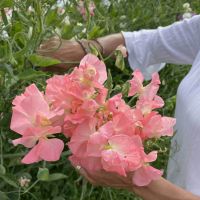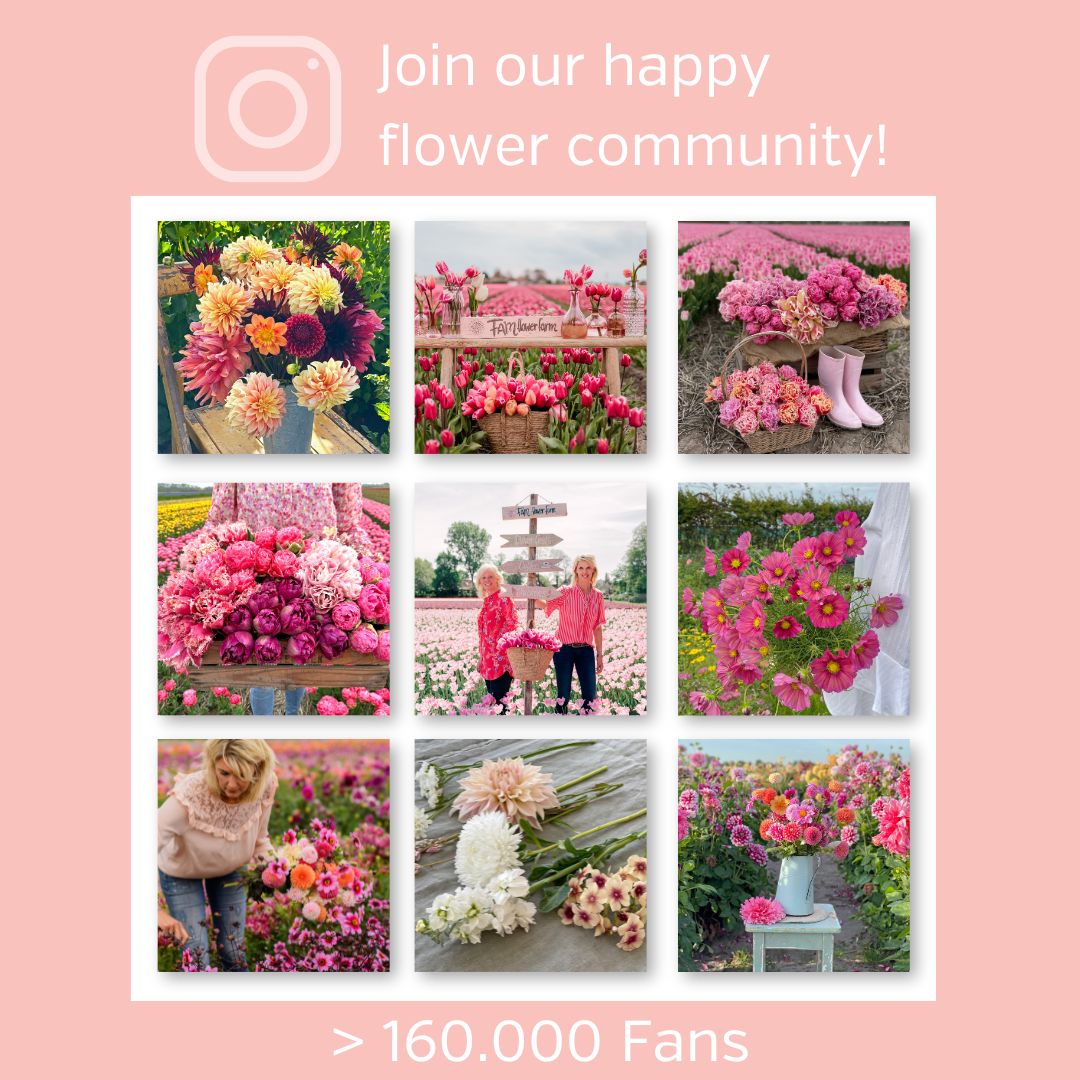Planting
The best spot
Look for a sunny spot that gets at least six hours of full sun a day and is protected from strong winds.
When to sow
Choose a dry or slightly rainy day. Do not sow in heavy rain or on hot days to prevent your seeds from being washed away or drying out. Do not start planting your seeds until the risk of night frost has disappeared (usually around mid-May). Some varieties are hardy (meaning that they can withstand winter weather) and can be sown a bit earlier. Read the back of the packet or visit our website for more information about when to sow your seeds.
Preparing the soil
Hoe the top layer of you soil to loosen it, get rid of any weeds and give it a smooth, uniform texture, free from any clods or stones. You may want to draw lines above the soil where you want to sow. Using a stick or the handle of a rake, make 2 or 3 shallow furrows (these are called ‘drills’), about 0.5 cm deep, in which the seeds can be sown. Make sure you leave enough room to walk between the drills (approx. 25 cm). Sowing your seeds in a drill makes it easier to see where you have sown and to tell the difference between your seedlings and any weeds that may come up. Convenient for weeding or hoeing!
Fertilising
If the soil in your garden could do with a bit of manure or compost, sprinkle this into the soil, preferably in winter (no later than April, in any case) so that the worms, birds and rain can work it into the soil. If you do this just before planting, the manure will make the soil too acidic for your delicate seedlings. You can, of course, add our lava meal during the planting process. Lava meal is 100% organic and contains numerous minerals that improve soil life and strengthen plants.
Watering
Seeds germinate best in a moist environment. Therefore, you should always moisten the soil before sowing. This will help the seeds stick to the soil and germinate faster. Do not water your newly planted seeds with a watering can or garden hose. This will cause them to pile up. After sowing, use a mist sprayer to give your seeds a bit more moisture, if necessary.
Sowing
If your seeds are big enough to pick up individually, drop them in the drill by hand or stick them into the soil on their side, about 1 to 2 centimetres deep into the ground. If the seeds you want to sow are very small, take them out of the bag and transfer them to a bowl or a seed dispenser before sowing. Take a pinch of seed between your thumb and a finger and sprinkle the seeds into the drill as sparingly as possible. This will help you sow your flowers more uniformly. Otherwise, they will grow irregularly and in clumps that are too close together. Careful sowing will save you work later when you have to thin out your seedlings. Very small seeds can also be mixed with small grains of sand so that they can be spread out more easily and uniformly.
Covering
The golden rule is this: cover the seeds with a layer of sand of the same thickness as your seed. This is also where it often goes wrong: never plant your seeds too deeply! Your seeds need to absorb warmth from the sun, otherwise they will not germinate. A thin layer of sand is often enough. Tip: use a sieve to cover your seeds with sand more carefully. Pat the surface of the soil down as lightly as possible to firm it in place.
Labelling
Write the name of the variety you are growing on a label, so that you know what you have sown and when, and stick it in the soil at the top of your flower bed.

Care
Weeding
Regularly remove weeds, either by hand or by working carefully with a small hoe. It is best to hoe in dry weather, so that the weeds will quickly wither and die. If the weeds get too big, they can overgrow your flowers and cause them to die. Even worse, if they are allowed to produce seeds themselves, your entire garden could be overrun with weeds. Weed regularly in spring. This will save you lots of work in summer!
Watering
Seeds and young plants need slightly moist soil to germinate, grow and produce roots. Check regularly to see if your plants need watering. Plants that have already grown a bit bigger have bigger roots and are therefore less likely to suffer from drought. Always water your plants in the morning or evening to avoid leaf burn caused by the sun and to give the soil and plants time to absorb the water. Therefore, always water your plants at the bottom rather than on the leaves. It is better to water heavily once or twice a week than to give your plants a little water every day. The roots will then make more effort to absorb the water at the bottom of the soil, making your plant stronger and more resistant to drought. Use a watering can or a garden hose with a nozzle to prevent the soil and your young plants from being washed away.
Thinning
Your seeds will quickly grow into small plants. To give your seedlings room to grow, they will need to be thinned out. That may seem a bit wasteful, but it really is necessary. Pull them up them very gently by the leaves – not the stems – and transplant them to another spot or throw them out if you run out of space. Of course, you could also give them away. Press the soil firmly into place and carefully water your seedlings.
Support
Some plants can grow very tall and will therefore need some support. Before planting the seeds, create a grid from wire netting and stakes. The plants will then grow up through the netting by themselves. If you want to add support later on, carefully place a few bamboo stakes in between the plants.
Harvesting
This is what you did it all for: the time has come to pick your flowers! Don’t be too cautious! Many plants will continue to grow, and produce new shoots and buds, when the flowers are regularly picked. In other words: if you don’t pick, you won’t get any new flowers! And what could be more fun than picking a lovely bunch of lowers, whether for yourself or to give away? Always use a clean, sharp knife or pruning shears when cutting flowers in your picking garden. The best time to cut flowers is in the morning or late evening, when the temperature has dropped a bit. Take a bucket of fresh water with you to put the flowers in immediately after harvesting. Use your knife or pruning shears to remove the leaves from the lower part of the stem (which will soon be immersed in water). Sprinkle the leaves among your plants, where they will decompose into nutrients for your soil.

Tips:
- Sow your seeds two to three times in succession, with a two-week interval in between, for an even longer harvest period.
- When you sow, take the size of your plants into consideration, in terms of both height and width. Those tiny seeds will need to have enough room to develop into mature plants.
- However, if you would like your plants to flower earlier in summer, pre-sowing is a good idea. This will also help you control predators, such as mice and slugs, more easily. Once the seedlings are large enough, you will be able to plant them wherever you want. Read here for instructions.
- If you live in a region with a milder climate, you can start sowing earlier. Conversely, you should start later if you live in a colder region. Lighter, fluffier types of soil warm up faster in spring and are subsequently ready for sowing, while sowing may need to be postponed in heavy, moist soils containing a lot of clay, which stay cold longer. When to sow may also depend on the temperature in spring.









